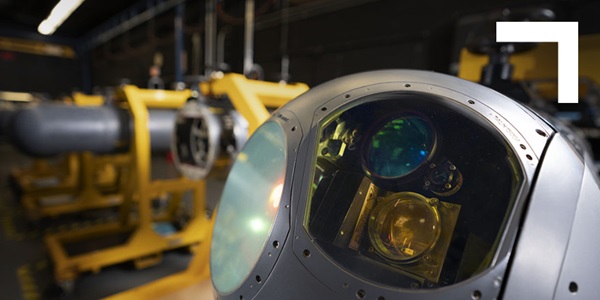The Brains Behind Military Electronics

By Kelly McSweeney
When designing high tech electronic systems for the military, standard electronic components simply won't cut it. While many consumer goods are built on standard microchips, military systems operate on application specific integrated circuits (ASICs). Northrop Grumman engineers are responsible for designing these custom chips to ensure secure processing for the Department of Defense (DOD).

What Are ASICs?
Think of an ASIC as the brain of a device that allows it to do its job. While standard chips are easier to come by, ASICs are more efficient because they are designed for a specific use. And they aren’t developed just for the military; in the commercial world, this technology is a part of consumer electronics, communications equipment and more.
"We're making a custom version similar to the kinds of processors that are inside iPhones," says Rob Kober, a Northrop Grumman fellow. "But ours meet DOD defense requirements for processing, environment, and physical security to keep the devices secure and protected as we field them overseas."
"Not only is designing an ASIC extremely difficult, but it's even harder in our world because we do not have room for error."
— Mary Buonomo, Manager of Digital Subsystems

Challenges of ASICs for Defense
Even under normal circumstances, ASICs are tricky to design, given their application-specific requirements for weight and power. Engineers must determine the exact shape of components such as transistors that will achieve the end goals, all while working at the nanometer scale.
When you add security and other military requirements and smaller production volumes, you create an extremely difficult problem to solve.
"Not only is designing an ASIC extremely difficult," says Mary Buonomo, manager of Digital Subsystems, "But it's even harder in our world because we do not have room for error."
Commercial electronics are typically designed to last just a few years. But military electronic systems need to last a few decades. The ASICs go inside vehicles and other equipment that will be deployed to remote locations for 20 or even 30 years. The high tech chips must also be resilient enough to withstand high altitudes and extreme environments, such as deserts and the coldest uninhabited regions. For military devices, reliability and dependability are matters of life and death.
"If our stuff doesn't work then our war fighters are seriously in trouble," says Kober. "Their lives are dependent on things behaving the way they're supposed to."
Plus, these tiny chips have to be physically secure. While the chips inside consumer goods are designed to prevent individual hackers from accessing them, Northrop Grumman's chips must be secure against bad actors. Tom Volpe, Northrop Grumman Fellow adds, "There are people who try to reverse-engineer physical devices to extract contents from them. Our goal is to craft a design of our processing product in such a way such that if any form of reverse engineering is applied, it does not successfully yield information."
"If our stuff doesn't work then our war fighters are seriously in trouble. Their lives are dependent on things behaving the way they're supposed to."
— Rob Kober, a Northrop Grumman fellow

Digital Twin Technology
"Our team is unique because we have the expertise to go from front end design all the way through the shapes that will ultimately get manufactured and fabricated," says Buonomo.
The team uses digital design tools to start with code and translate it into a list of logic gates, the basic building blocks of the system.
"We keep going through additional tool flows to go from a really abstract representation of how it behaves all the way down to physically — the wires and the transistors and the shapes that represent transistors in order to make this function," says Kober. Recently, the team has started using advanced computer systems called emulators that make a digital twin — in other words, a digital version - of the chips. That way, engineers can simulate the chip and integrate its behavior with software to see how it will actually run and troubleshoot potential problems.
Secure, In-House Design
While commercial chip providers can outsource elements of ASIC design globally, Northrop Grumman designs it all in house. That way, the entire process happens on secure computers and a secure network to eliminate opportunities for adversaries. "We get to solve the mission problem from concept of solution through all of the stages of implementation to realization of a product," says Volpe. "And then, ultimately, it's used in DOD systems that protect our nation and save war fighter lives."


